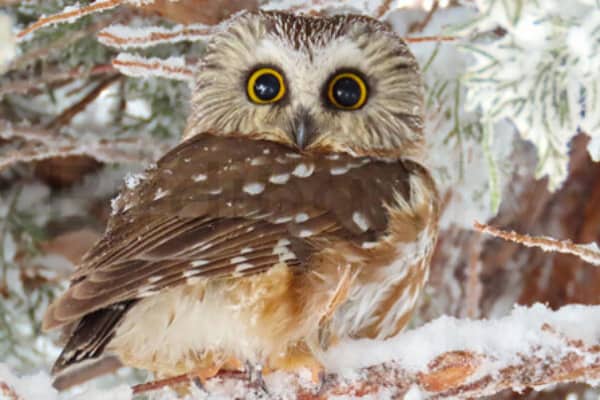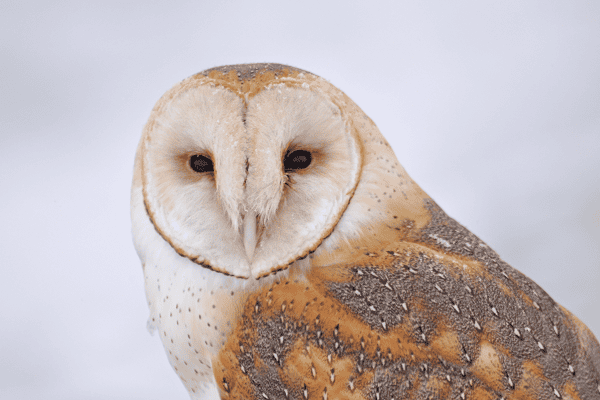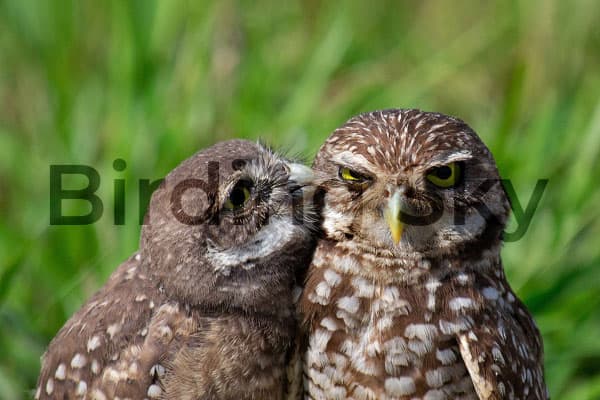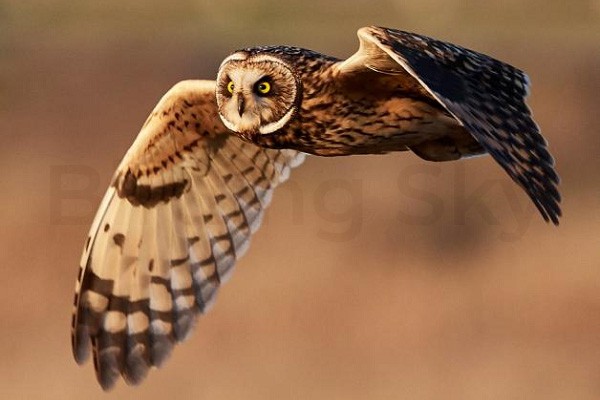Do you know how many species of owls call Texas home? From the dense forests to the wide-open plains, these magnificent birds have adapted and thrived in the Lone Star State. But just how many different types of owls reside in this diverse region? And what do they look like?
In this article, we will take you on a journey through the world of owls in Texas. Together, we’ll explore the rich biodiversity and discover fascinating facts about 11 unique owl species that inhabit various habitats across the state. In addition, we’ll provide you with stunning pictures that capture the beauty and allure of these remarkable creatures.
Prepare to be captivated by their mesmerizing eyes, majestic wings, and silent flights. Join us as we unravel the secrets of these enigmatic birds and shed light on their importance in the Texas ecosystem.
So, are you ready to meet the incredible owls of Texas? Let’s dive in!
Key Takeaways:
- 11 different species of owls can be found in Texas.
- Each owl species has unique characteristics, habitats, and behaviors.
- Through stunning pictures, you’ll get a glimpse of the beauty of Texas owls.
- Owls play a vital role in the Texas ecosystem.
- Stay tuned to discover more about owl conservation efforts in Texas.
Northern Saw-whet Owl
Discover the beauty and wonder of the Northern Saw-whet Owl, a native species found in the heart of Texas. With its small size and captivating features, this owl is a true gem of the Lone Star State.

The Northern Saw-whet Owl, scientifically known as Aegolius acadicus, is a small owl species that reaches approximately 7-8 inches in length. Despite its petite stature, it has a striking appearance that will leave you in awe.
Featuring bright yellow eyes and a rounded head with prominent facial disks, the Northern Saw-whet Owl boasts a unique and charismatic charm. Its feathers are beautifully patterned with a mix of brown, white, and gray tones, allowing it to blend seamlessly with its woodland habitat.
This wonderful owl can be found throughout Texas, particularly in deciduous and mixed-conifer forests. It prefers areas with dense vegetation and is often spotted perched on tree branches, camouflaging effortlessly with its surroundings.
Did you know? The Northern Saw-whet Owl derives its name from the sound of its call, which resembles the repetitive sound of a saw being sharpened on a whetstone.
When it comes to behavior, the Northern Saw-whet Owl is primarily nocturnal, meaning it is most active at night. It hunts for small rodents, birds, and insects, using its sharp talons and excellent hearing to locate prey in the darkness.
“The Northern Saw-whet Owl’s ability to adapt to various habitats and its remarkable camouflage make it a challenge to spot in the wild. However, the reward of catching a glimpse of this elusive owl is truly unforgettable.”
If you’re lucky enough to witness the Northern Saw-whet Owl up close, you’ll be captivated by its charm and secretive nature. Join us as we explore more about this magnificent owl through captivating pictures and fascinating insights.
Snowy Owl
Experience the awe-inspiring beauty of the Snowy Owl, a majestic visitor to the Lone Star State of Texas. These stunning birds captivate with their pure white plumage and graceful flight.

Each winter, the Snowy Owl ventures south from its Arctic breeding grounds, seeking milder temperatures and abundant prey. Texas is fortunate to be graced with the presence of these magnificent creatures during their annual migration.
The Snowy Owl’s arrival in Texas is a rare and highly anticipated event for birdwatchers and nature enthusiasts. Their majestic presence adds a touch of magic to the winter landscape, as they roost in open fields and coastal areas.
This owl species is well-known for its striking appearance, characterized by bright yellow eyes and distinctive feather patterns. The male Snowy Owls boast a lighter plumage with intricate black markings, while the females exhibit a more barred pattern.
One of the fascinating aspects of Snowy Owl migration is the variability in their numbers. Some winters, Texas becomes the temporary home for a larger influx of Snowy Owls, known as an “irruption.” These irruptions occur when the availability of their primary prey, mainly lemmings, decreases in the Arctic, forcing the owls to search for alternative food sources.
“The arrival of Snowy Owls in Texas is a testament to their adaptability and survival instincts. It’s a remarkable sight when these majestic birds grace our landscapes,” says bird expert Dr. Anna Thompson.
Birdwatchers and photographers flock to Texas during Snowy Owl migration, hoping to catch a glimpse of these stunning creatures in action. Their regal presence and striking imagery make for unforgettable wildlife encounters.
So, keep an eye to the skies during the winter months in Texas. You might just spot a Snowy Owl, a magnificent visitor that brings a touch of Arctic wonder to the Lone Star State.
Other Species of Owls in Texas
While the Northern Saw-whet Owl and Snowy Owl are both fascinating owl species found in Texas, the Lone Star State is also home to several other captivating owl species. Let’s explore some of these magnificent birds and learn more about their habitats, unique characteristics, and behavior.
1. Barn Owl

The Barn Owl is a common sight in Texas, with its heart-shaped face and pale plumage making it easily recognizable. These nocturnal hunters can be found in a variety of habitats, including grasslands, agricultural areas, and forests.
2. Eastern Screech-Owl

The Eastern Screech-Owl is a small owl with excellent camouflage, allowing it to blend seamlessly with the trees it inhabits. With its distinctive trilling call, this owl is a frequent visitor to suburban areas, where it can find ample food and nesting sites.
3. Great Horned Owl

The Great Horned Owl is one of the largest owl species in Texas, known for its striking appearance and deep hooting call. These adaptable owls can be found in a wide range of habitats, from forests and deserts to urban areas.
4. Barred Owl

The Barred Owl is a resident species in Texas, with its beautiful brown plumage and distinctive “Who cooks for you?” call. These owls prefer forested areas near water, where they hunt for prey and nest in tree cavities.
5. Burrowing Owl

The Burrowing Owl is a unique species known for its preference to nest in burrows instead of trees. Found in grasslands and desert areas, these small owls are often seen perched on fence posts or mounds, watching for prey.
6. Short-eared Owl

The Short-eared Owl is a winter visitor to Texas, known for its distinctive facial disk and low flight over open fields. These owls hunt for small mammals and birds, often forming communal roosts during the colder months.
| Owl Species | Habitat | Unique Characteristics | Behavior |
|---|---|---|---|
| Barn Owl | Grasslands, agricultural areas, forests | Heart-shaped face, pale plumage | Nocturnal hunter |
| Eastern Screech-Owl | Forest, suburban areas | Camouflage, trilling call | Nocturnal hunter, frequent visitor to suburban areas |
| Great Horned Owl | Forests, deserts, urban areas | Striking appearance, deep hooting call | Adaptable, wide range of habitats |
| Barred Owl | Forested areas near water | Brown plumage, distinctive call | Forest-dweller, nests in tree cavities |
| Burrowing Owl | Grasslands, desert areas | Preference for burrows, perches on mounds | Ground-dweller, social behavior |
| Short-eared Owl | Open fields | Distinctive facial disk, low flight | Winter visitor, communal roosts |
Explore More Owl Species in Different Regions
Most Common Owls in South Carolina
Conservation Efforts for Texas Owls
Texas is home to a diverse owl population, but these remarkable birds face significant challenges. Owl conservation in Texas plays a crucial role in preserving their habitats and ensuring their survival for future generations.
One of the main challenges for owl conservation in Texas is the loss of suitable habitats. Rapid urbanization, deforestation, and agricultural expansion have led to the destruction of nesting sites and hunting grounds for these magnificent creatures. To address this issue, various initiatives have been undertaken to protect and restore their habitats.
Conservation organizations and wildlife agencies work tirelessly to monitor Texas owl populations and implement strategies to mitigate threats. These efforts include creating protected areas, promoting responsible land and forest management practices, and educating the public about the importance of owl conservation.
You can also contribute to owl conservation in Texas. By supporting local conservation organizations, volunteering in habitat restoration projects, and spreading awareness about the importance of preserving these beautiful birds, you can make a positive impact on the Texas owl population.
